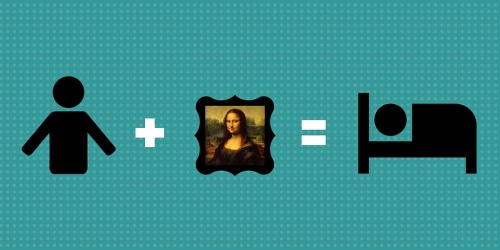Ever get to that point when visiting museum when you can go no farther? There’s a term for it: museum fatigue. Turns out people have been grappling with ways to make museums more engaging for nearly a century.
When Benjamin Ives Gilman first wrote about museum fatigue in the January 1916 edition of The Scientific Monthly, he hoped to address literal fatigue. Gilman, who became the curator of Boston’s Museum of Fine Art, called it an “admitted evil” and suggested that studying the phenomenon might lead to preventing it.
Gilman focused on ways to make it easier for patrons to actually see works of art. He said they were too often overexerted by bending down or straining to see something through glass or in bad lighting. His solutions were practical: place paintings at eye level, make exhibition cases shallower bringing objects closer to the eye. You get the idea.
The folks at Museum Hackexamined the study to see if today’s museums could apply any of the same lessons.
We want to take that one step further and look at some of the ways in which museums are using technology and data to keep people interested in museums. And we’re not just referring to keeping patrons engaged, but actually getting them through museum doors.
We’re constantly looking for examples of museums using technology and data to enhance the museum experience. Last week, we highlighted the Museum of Modern Art uploading its collection data to Github. That and other museums’ publicly available collections open up almost infinite possibilities like creating new art or using data to interpret works in different ways.
Jeff Steward thinks associating museums with fun is part of the answer to the question about how to keep people interested in them. Steward, the Director of Digital Infrastructure and Emerging Technology at Harvard Art Museums, told us that injecting fun comes from his introduction to museums when art was meant to be revered from a distance and not experimented with.
Because art is open to interpretation, Steward said “it’s important that visitors are given agency to interact, criticize, and enjoy art on a level that makes sense for them.”
Harvard Art Museums is doing that with the Lightbox Gallery, its public research and development space. Steward said technology packed into the space facilitates open-ended experimentation. He said Harvard Museums uses the Lightbox to host gallery talks and present different approaches to visualizing data collections. Steward said these talks allow his department to share some of their more abstract and creative ideas, most of which never make it to the museums.
“The most engaging moments have been when I’ve been in the Lightbox during open hours programming some new data visualization and visitors come into the space” he said. “Nine times out of 10, I’d end up in great conversations about what I’m doing, which might give the visitor a whole new perspective on what museums are and do. The technology in the Lightbox has really been a conduit to creating more thoughtful and different types of interactions with visitors.”
Steward said he loves seeing how varied different applications of data have become. And he loves when museums give artists space to integrate their pieces in an existing collection like the Charles Sandison installation at the Peabody Essex Museum in Salem, Massachusetts.
Sandison, a visual artist who lives in Finland, projected ship captains’ logs onto the ceiling of the museum’s East India Marine Hall. Its website describes that info as having “led to the founding of the museum and the origins of PEM’s remarkable collection.”
Steward called the exhibit “a fantastic convergence of new art that used data and projection and a traditional gallery setting. What worked for me was that the digital technology was part of the piece and not tacked on as some adjunct method for assessing interpretive material.”
How can your museum be leveraging mobile to deliver more value? We can help answer that! Contact us today.
Suggested reading



